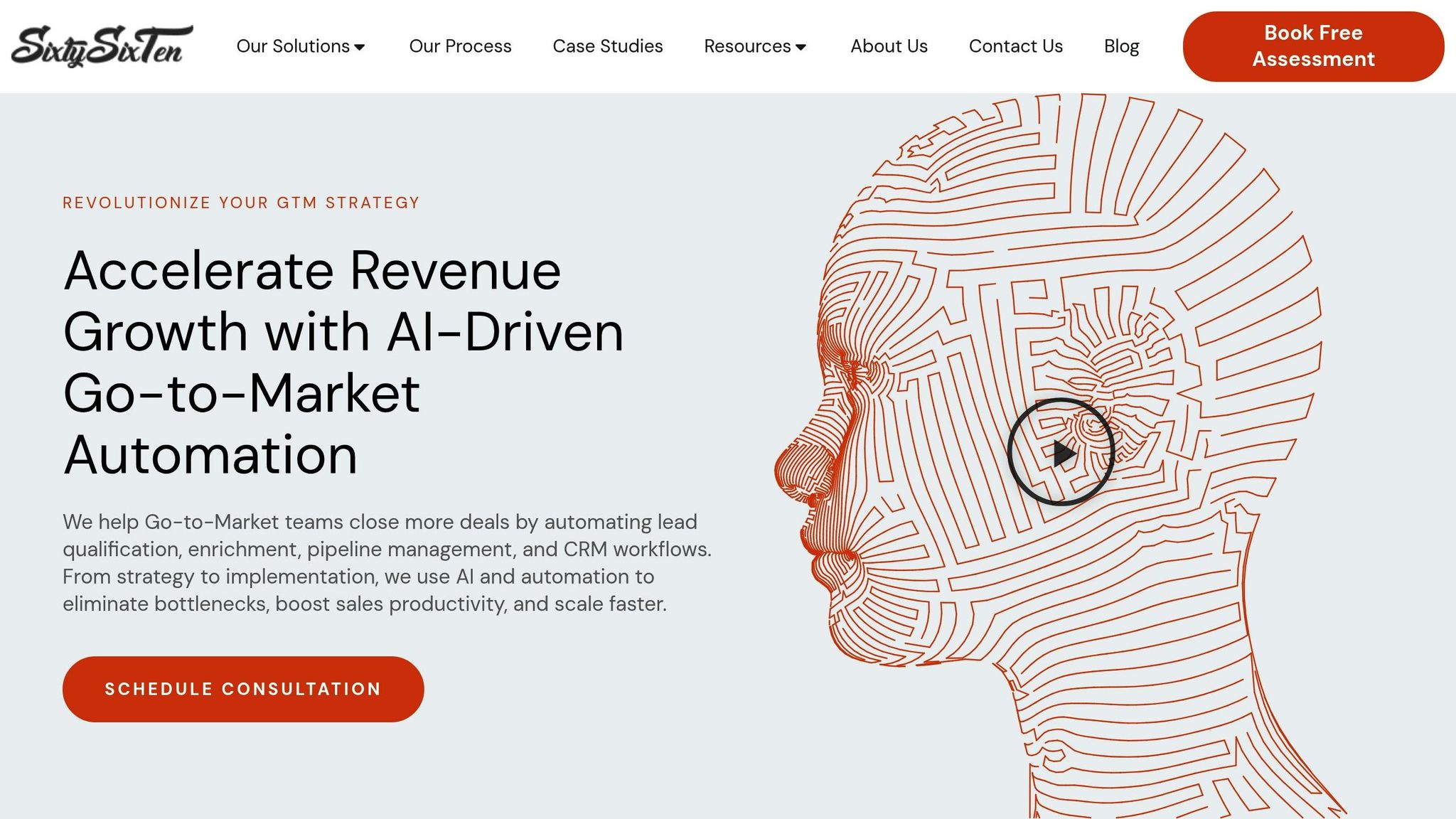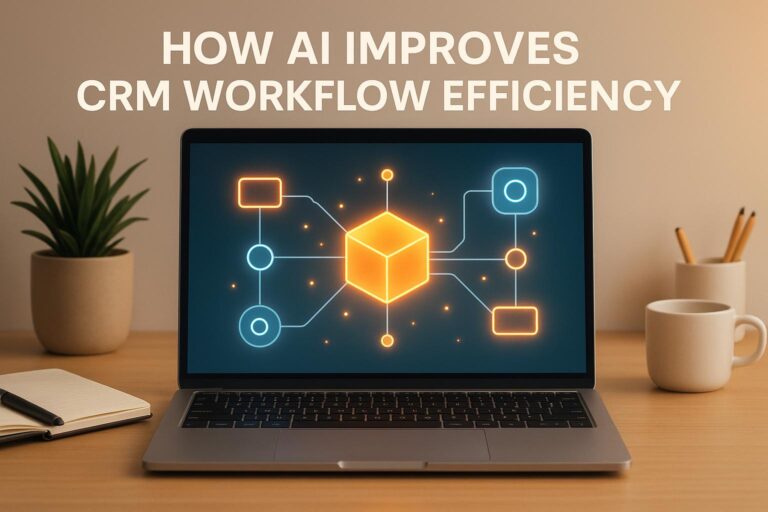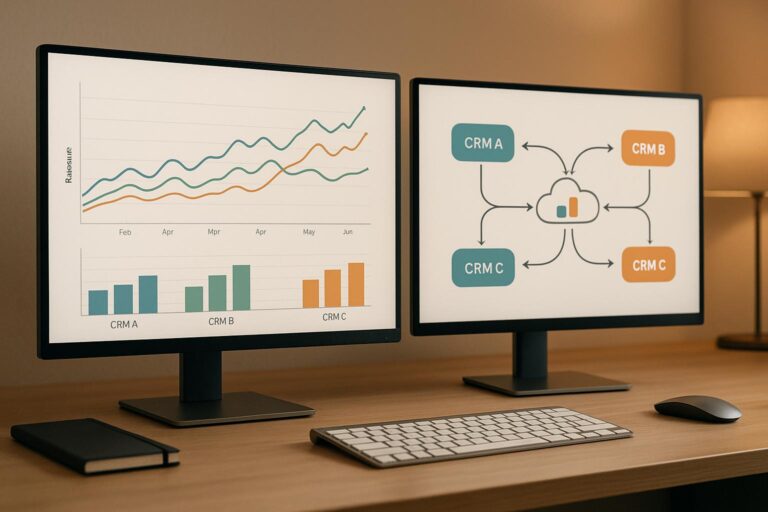Managing tax compliance for SaaS businesses is complex. With customers across multiple regions and ever-changing tax laws, manual processes often fall short. AI simplifies this by automating tax calculations, filing, and audit preparation, reducing errors and saving time. Here’s how AI transforms tax compliance:
- Real-time tax calculations: AI tools sync with billing systems to automatically apply accurate tax rates during transactions.
- Audit readiness: Automated systems maintain detailed records, manage exemption certificates, and speed up audits.
- Global compliance: AI handles VAT, GST, and sales tax across multiple jurisdictions, adjusting to new regulations instantly.
- Integration with existing tools: AI connects with billing, CRM, and accounting software to create a unified compliance workflow.
For SaaS companies, AI solutions not only reduce compliance risks but also free up resources to focus on growth. Whether through no-code tools or custom development, adopting AI ensures businesses stay ahead of tax obligations in a dynamic landscape.
How Are AI And Machine Learning Revolutionizing Tax Compliance? – All About SaaS Finance
Main Challenges in SaaS Tax Compliance
Navigating tax compliance in the SaaS world is no small feat. With customers spread across various regions, each with its own set of tax rules, staying compliant can feel like trying to hit a moving target. The challenges largely fall into two categories: the complexity of tax regulations and the potential fallout from non-compliance.
Complex Tax Rules Across Different Locations
One of the biggest hurdles is dealing with the patchwork of tax laws across different regions. In the United States alone, tax regulations can differ not just from state to state but even between local jurisdictions. This creates a maze for SaaS companies to figure out when and how to apply taxes to their services.
On a global level, things get even trickier. Countries have their own rules for VAT (Value-Added Tax) and GST (Goods and Services Tax), and these often require specific registration, filing, and reporting processes. To keep up, SaaS billing systems need to handle real-time tax calculations during transactions, ensuring compliance without slowing down operations.
Risks of Non-Compliance
Falling short on tax compliance can have serious repercussions. Penalties, interest charges, and increased liabilities are just the beginning. Non-compliance can also attract audits, with tax authorities potentially scrutinizing years of records if they spot inconsistencies.
Beyond the financial impact, compliance issues can disrupt business flow. Handling audits or fixing errors pulls resources away from growth-focused activities, creating operational headaches that no SaaS company wants to face.
AI-Powered Tax Compliance Solutions
AI is reshaping how SaaS companies handle tax compliance by automating everything from real-time tax calculations to preparing for audits. These systems take on the heavy lifting of managing intricate tax rules and creating detailed audit documentation, allowing businesses to stay compliant while focusing on growth opportunities. By simplifying these processes, AI not only tackles complex tax challenges but also ensures smooth integration with existing systems.
Real-Time Tax Calculation and Filing
Navigating the maze of tax rules across various regions can be overwhelming, but AI tools make it manageable. These systems calculate taxes accurately and in real time, monitoring tax thresholds across multiple jurisdictions. They alert businesses when economic nexus thresholds are met, signaling the need to register for taxes in new areas.
AI integrates directly with billing platforms to apply correct tax rates during checkout and automatically generates and files tax returns. This level of automation removes the guesswork that often leads to compliance errors. For SaaS companies juggling different filing schedules across states or countries, these tools are a game-changer.
Automated Audit and Exemption Certificate Management
AI goes beyond calculations by streamlining audits and managing exemption certificates – historically a headache for SaaS businesses. The process, from collecting to validating exemption certificates, is fully automated. For instance, an AI-powered system cut audit preparation time by 40% and reduced compliance-related audit findings by 30%.
"AI has transformed our approach to managing exemption certificates, allowing us to focus on strategic initiatives rather than getting bogged down in compliance details." – John Smith, Chief Financial Officer, CloudTax
These systems verify the authenticity of certificates, track expiration dates, and send renewal reminders before they lapse. They also cross-check certificate details with customer data, minimizing human errors that often lead to audit issues.
When it comes to audits, AI tools maintain meticulous records of transactions, exemptions, and tax calculations. They can quickly produce the documentation required by tax authorities, speeding up the audit process and improving accuracy. Companies leveraging AI for tax compliance report a 50% drop in audit risks due to enhanced documentation and process precision.
"The integration of AI in our tax compliance processes has not only reduced our audit risks but also improved our overall operational efficiency." – Sarah Johnson, Tax Compliance Manager, SaaS Solutions Inc.
Integration with SaaS Billing Systems
AI’s ability to integrate with existing SaaS systems ensures a smooth compliance workflow. When connected to platforms like billing systems, CRM tools, and ERP software, AI creates a unified approach to tax compliance.
For example, customer data flows seamlessly from CRM systems to tax platforms, ensuring calculations are always based on up-to-date information. This integration eliminates manual errors and keeps data consistent across all platforms. It also handles complex scenarios, like prorated charges, mid-cycle plan changes, and refunds, all while maintaining compliance.
Additionally, AI tax tools sync with accounting software, automatically posting tax liabilities to the correct accounts and maintaining detailed audit trails. This provides real-time insights into tax obligations and generates comprehensive reports, enabling informed decisions for market expansion.
sbb-itb-647c22e
How to Implement AI in Tax Compliance: Best Practices
Implementing AI in tax compliance can transform how businesses manage their obligations. The key is to align your technical resources, operational complexities, and timelines with the right tools and strategies. Here’s how you can effectively bring AI into your compliance processes.
Using No-Code/Low-Code Automation Tools
No-code and low-code platforms are a game-changer for automating tax compliance. These platforms allow businesses to deploy AI-powered workflows without needing a team of developers. Tools like n8n, Zapier, and Make.com simplify automation, handling tasks like complex tax calculations and compliance reporting with ease.
"No-code platforms are revolutionizing how businesses can implement AI solutions, making it easier for teams to automate complex workflows without needing extensive technical expertise." – John Smith, CEO of Make.com
The strength of these platforms lies in their ability to integrate with a wide range of systems. For instance, Make.com offers more than 3,000 pre-built applications, enabling seamless data synchronization across billing, CRM, and accounting tools. This real-time data connectivity ensures accurate tax calculations and compliance reporting, which are critical in managing tax obligations.
One SaaS company, for example, used automation to cut weekly manual data entry from 10 hours to just 1 hour, reducing labor costs for compliance tasks by 90%. With these tools, repetitive tasks like data validation, threshold monitoring, and report generation become fully automated. Imagine pulling customer data from your CRM, applying the correct tax rates, and generating compliance reports – all without lifting a finger. Plus, their visual workflow builders make it easy for non-technical staff to adapt processes when tax regulations change.
To get started with no-code solutions, map out your current workflows and identify the most time-consuming tasks. Automate these first to achieve quick wins and demonstrate the value of automation to your stakeholders.
Custom Development for Complex Compliance Needs
Sometimes, no-code platforms can’t address every scenario. Businesses with unique compliance challenges – like operating in multiple international markets or managing complex tax exemption rules – may need custom-built solutions. These tailored approaches ensure even the most specific requirements are met.
"Custom solutions are essential for companies with unique compliance needs; they ensure that all specific requirements are met efficiently." – Sarah Johnson, Compliance Expert at SixtySixTen
Custom development is ideal for handling edge cases that generic platforms might overlook. For instance, a SaaS company selling to both B2B and B2C markets across various states might need bespoke logic to manage different exemption certificates, fluctuating tax rates, and nexus determination rules.
While custom solutions require a larger initial investment and ongoing maintenance, they provide unmatched precision and flexibility. They’re particularly valuable for businesses managing intricate tax scenarios or integrating with legacy systems. A hybrid approach works well here – use no-code tools for standard integrations and custom code for specialized logic.
Unified Dashboards for Compliance Visibility
Centralized dashboards are vital for maintaining transparency and staying ahead of compliance issues. These dashboards bring together data from multiple sources, offering a real-time view of tax obligations, filing statuses, and potential risks.
"Real-time dashboards provide a centralized view of compliance metrics, ensuring that businesses can quickly identify and address potential issues." – Make.com
A well-designed dashboard should display key metrics like tax collection rates, filing deadlines, certificate expirations, and audit trails. It should also send alerts for missing documentation, regulatory updates, or threshold breaches. Modern tools like Google Looker and PowerBI make it easy to create interactive visualizations, translating complex compliance data into actionable insights for both technical and non-technical users.
Dashboards can also track the ROI of your AI implementation. Monitor metrics such as time saved on manual tasks, error reduction, and audit preparation efficiency to showcase the value of your automation efforts. Prioritize actionable insights over vanity metrics, ensuring the information helps prevent compliance issues and supports quick decision-making.
To make the most of your dashboard, schedule regular reviews as part of your compliance routine. This proactive approach ensures your AI systems stay aligned with evolving regulations and continue delivering measurable benefits.
How SixtySixTen Helps with Tax Compliance Automation

SixtySixTen takes the headache out of tax compliance for post-PMF B2B SaaS companies by using an engineering-driven approach. They know the hurdles businesses face when scaling revenue operations – like juggling complex tax rules across multiple jurisdictions and syncing compliance workflows with existing billing systems.
Engineering-Backed GTM Automation Systems
SixtySixTen turns tedious manual tasks into streamlined, automated workflows, making tax compliance an effortless part of your go-to-market strategy.
"We help Go-to-Market teams close more deals by automating lead qualification, enrichment, pipeline management, and CRM workflows." – SixtySixTen
Their automation solutions deliver tangible results, such as a 30% increase in revenue through optimized processes. In 2025, they worked with a B2B SaaS company to create a tailored automation system that not only simplified tax compliance but also cut compliance-related errors by 30%. This reduced the need for manual tax calculations, saving time and resources [Case Studies, 2025]. What makes SixtySixTen stand out is their ability to provide real-time insights while aligning compliance workflows with sales and marketing efforts. This creates a unified compliance ecosystem that supports scalable growth.
Custom Solutions for SaaS Companies
SixtySixTen’s expertise, honed through experience with over 100 clients worldwide, combines no-code tools and custom development to tackle even the trickiest compliance challenges. Whether it’s using platforms like Make.com, Clay.com, Trigify, Google Looker, and PowerBI or building tailored solutions for tasks like currency conversions, VAT calculations, and country-specific reporting, they ensure seamless integration with your existing systems.
"Our custom solutions not only optimized our operations but also significantly reduced downtime." – John Carter, Senior Operations Manager
Their approach doesn’t just solve tax compliance issues – it also improves operational efficiency, freeing up your team to focus on driving growth instead of getting bogged down in administrative tasks.
Continuous Support and Optimization
Tax laws are always changing, and static systems can quickly become outdated. SixtySixTen’s continuous support model keeps your compliance workflows up to date with evolving regulations and business needs. Their team proactively adjusts automation workflows whenever new tax laws or rate changes come into play, ensuring your systems stay ahead of the curve.
Using data-driven optimization, they create unified dashboards that provide real-time insights into compliance performance, error rates, and system efficiency. This helps pinpoint areas for improvement and ensures your automation delivers consistent value as your business scales.
The Future of AI in SaaS Tax Compliance
The way SaaS companies handle tax compliance is undergoing a major shift, and we’re only at the beginning of what’s possible. Over the next decade, AI is set to reshape tax management, moving it from a reactive process to one that’s proactive and highly efficient. These early advancements are laying the groundwork for smarter, more integrated compliance systems.
AI-driven tax compliance has already shown it can boost efficiency by up to 50% while drastically reducing errors. By automating complex tax calculations across multiple jurisdictions, this technology eliminates the need for time-consuming manual processes, allowing companies to allocate resources more effectively.
But AI isn’t just about crunching numbers anymore. Modern systems can now track regulatory changes across states and countries in real time, automatically updating to reflect new rules. This means SaaS companies can focus on scaling their operations, knowing their compliance systems are keeping up with ever-changing regulations in the background.
What’s more, AI tools are integrating effortlessly with billing systems, CRM platforms, and financial software, creating seamless ecosystems where data flows automatically. Real-time dashboards provide instant insights, breaking down silos and reducing manual errors. This shift to proactive compliance management is streamlining operations and saving businesses significant time and effort.
For SaaS companies working across multiple markets, AI’s ability to handle diverse regulatory requirements is a game-changer. A single AI system can manage VAT for European customers, sales tax for U.S. states, and GST for other regions, all while maintaining accuracy and adhering to local laws.
Another exciting development is the rise of no-code and low-code automation tools, which make advanced compliance solutions accessible to businesses of all sizes. Even companies without large technical teams can now implement sophisticated AI systems, leveling the playing field for smaller players.
As tax regulations continue to evolve and SaaS business models grow more complex, those investing in tailored AI solutions today will gain a significant edge. They’ll not only operate more efficiently but also reduce risk and confidently expand into new markets without being bogged down by compliance challenges.
FAQs
How does integrating AI with SaaS billing systems enhance tax compliance?
Integrating AI into SaaS billing systems takes the headache out of tax compliance by automating tricky tasks like tax calculations, reporting, and managing rules that vary across jurisdictions. AI tools can spot discrepancies, apply the correct tax rates, and adjust to regulatory updates instantly, cutting down on errors and saving valuable time.
These AI-driven solutions also simplify workflows by removing manual tasks, boosting overall efficiency. This allows businesses to focus on scaling and growth, all while staying aligned with ever-changing tax laws.
What risks do SaaS companies face if they don’t adopt AI-driven tax compliance solutions?
Failing to adopt AI-driven tax compliance tools can leave SaaS companies vulnerable to a host of risks. These risks include hefty fines for filing mistakes, falling out of step with ever-changing tax laws, and relying on manual processes that consume valuable time and resources.
Without AI, businesses often face challenges in navigating complex, region-specific tax regulations or calculating taxes accurately across multiple jurisdictions. The result? Overpayments, underpayments, or missed deadlines that can disrupt cash flow and erode customer confidence. By integrating AI, companies can streamline these processes, ensuring precision, efficiency, and adherence to tax rules in an increasingly dynamic environment.
How do no-code and low-code tools simplify tax compliance for SaaS companies?
No-code and low-code tools make tax compliance easier for SaaS companies by automating complex tasks, cutting down on manual work, and reducing the chance of mistakes. These tools let businesses set up custom workflows to handle things like tax calculations, reporting, and data integration more efficiently.
Take platforms like n8n and Clay, for instance. They help automate repetitive tasks across tools like CRM systems, email platforms, and reporting software. The result? Businesses save time and improve compliance accuracy. On top of that, these tools can pull data together into real-time dashboards, offering clear insights into tax responsibilities and overall performance. This makes staying compliant far less stressful.



